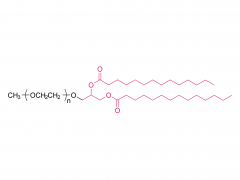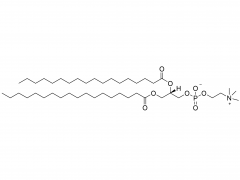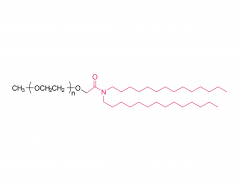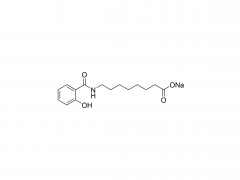Nanoscale. 2015 Mar 12;7(12):5249-61. doi: 10.1039/c4nr07591a. Core-shell hybrid upconversion nanoparticles carrying stable nitroxide radicals as potential multifunctional nanoprobes for upconversion luminescence and magnetic resonance dual-modality imaging Chuan Chen 1, Ning Kang, Ting Xu, Dong Wang, Lei Ren, Xiangqun Guo Abstract Nitroxide radicals, such as 2,2,6,6-tetramethylpiperidine 1-oxyl (TEMPO) and its derivatives, have recently been used as contrast agents for magnetic resonance imaging (MRI) and electron paramagnetic resonance imaging (EPRI). However, their rapid one-electron bioreduction to diamagnetic N-hydroxy species when administered intravenously has limited their use in in vivo applications. In this article, a new approach of silica coating for carrying stable radicals was proposed. A 4-carboxyl-TEMPO nitroxide radical was covalently linked with 3-aminopropyl-trimethoxysilane to produce a silanizing TEMPO radical. Utilizing a facile reaction based on the copolymerization of silanizing TEMPO radicals with tetraethyl orthosilicate in reverse microemulsion, a TEMPO radicals doped SiO2 nanostructure was synthesized and coated on the surface of NaYF4:Yb,Er/NaYF4 upconversion nanoparticles (UCNPs) to generate a novel multifunctional nanoprobe, PEGylated UCNP@TEMPO@SiO2 for upconversion luminescence (UCL) and magnetic resonance dual-modality imaging. The electron spin resonance (ESR) signals generated by the TEMPO@SiO2 show an enhanced reduction resistance property for a period of time of up to 1 h, even in the presence of 5 mM ascorbic acid. The longitudinal relaxivity of PEGylated UCNPs@TEMPO@SiO2 nanocomposites is about 10 times stronger than that for free TEMPO radicals. The core-shell NaYF4:Yb,Er/NaYF4 UCNPs synthesized by this modified user-friendly one-pot solvothermal strategy show a significant enhancement of UCL emission of up to 60 times more than the core NaYF4:Yb,Er. Furthermore, the PEGylated UCNP@TEMPO@SiO2 nanocomposites were further used as multifunctional nanoprobes to explore their performance in the UCL imaging of living cells and T1-weighted MRI in vitro and in vivo. Related products Abbreviation: mPEG-NHS For more product information, please contact us at: US Tel: 1-844-782-5734 US Tel: 1-844-QUAL-PEG CHN Tel: 400-918-9898 Email: sales@sinopeg.com
View More





























